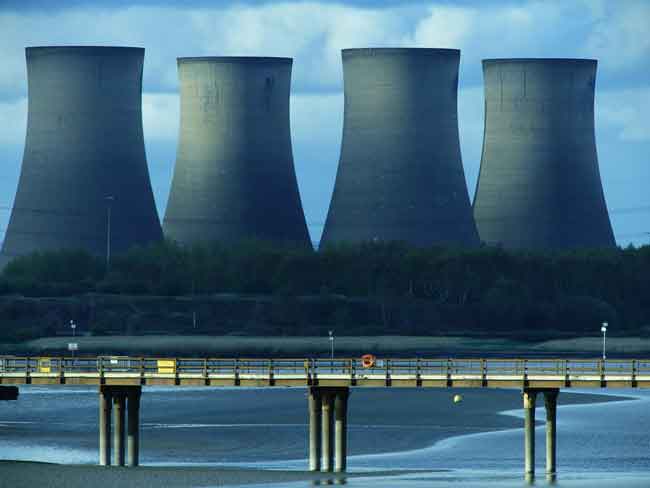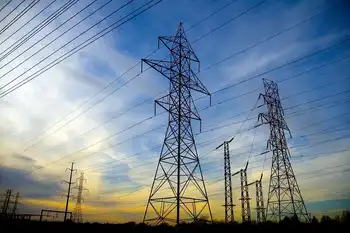Are we really ready to change the world?
By Halifax Chronicle Herald
Electrical Testing & Commissioning of Power Systems
Our customized live online or in‑person group training can be delivered to your staff at your location.

- Live Online
- 12 hours Instructor-led
- Group Training Available
And a week before Christmas, we will learn if the world is ready to take some truly big steps to avert a disaster for the next generation.
Officials from almost 200 different countries will meet in Copenhagen from December 7 to 18 in an attempt to negotiate a new climate change treaty to succeed the 1997 Kyoto Protocol.
The prospects for a comprehensive agreement by then are close to zero. The real question is whether there can be enough of an agreement to continue negotiations in a serious way. This has happened before.
The Kyoto Protocol was signed, with much 11th-hour fanfare, in 1997, but the detailed agreement was not reached until 2001, and Kyoto did not come into effect until 2005. There are huge stumbling blocks.
One is a public reluctance to accept the significance of climate change and the threats posed to future generations, especially in Canada and the United States. A recent report from the Pew Global Attitudes Survey found that just 47 per cent of Canadians and 44 per cent of Americans see global warming as "a very serious problem." This compares to 68 per cent of people in France, 65 per cent in Japan and 60 per cent in Germany.
This means there is an unwillingness to accept the need for urgent action. This creates fertile ground for corporate lobbyists seeking to delay or water down public policies on climate change.
During Kyoto negotiations Canadian corporate groups dismissed climate change as simply another theory and warned of dire economic consequences if Canada acted.
Another challenge is to reconcile the need for urgent action now by the most advanced economies, while persuading the emerging economies, such as China, India, Brazil and Indonesia, that they have to be part of the solution, not by emission caps at this stage, but by reducing their carbon intensity per unit of gross domestic product.
Canada and the U.S. have set bad examples for the rest of the world. CanadaÂ’s greenhouse gas emissions have increased 26 per cent above 1990 levels, despite a Kyoto pledge to reduce them by eight per cent from 1990 levels by 2010-12.
U.S. emissions have increased 17 per cent, so it has done better than Canada, but it too has set a bad example for the world.
CanadaÂ’s official target is to halt the growth in emissions by 2010-12, reduce emissions by 20 per cent from 2006 levels by 2020, with the goal of achieving reductions of 60 to 70 per cent by 2050, according to Environment Canada.
Under legislation the U.S. Congress is debating, the American goal is to reduce emissions by three per cent from 2005 levels by 2012, a further 17 per cent from 2005 levels by 2020, 42 per cent by 2030 and 83 per cent from 2005 levels by 2050.
Not only are U.S. targets higher than those of Canada, they are also more onerous. The U.S. gets about half its electricity from coal, which is the most carbon-intensive form of electricity production, whereas Canada gets almost 60 per cent of its electricity from hydro power and a further 15 per cent from nuclear, both of which have zero emissions.
CanadaÂ’s big challenge comes from development of its "dirty oil" from the oilsands. Ambitious plans for further rapid development pose a serious threat to CanadaÂ’s contribution to a safer global environment.
There is also a notion that because the biggest target is for 2050, there is lots of time to act. But as Michael Levi of the Council on Foreign Relations in New York argues in the latest edition of Foreign Affairs magazine, because of the length of time it takes to transform major changes in global energy systems, "2050 might as well be tomorrow."
As he points out, "most of the buildings, power plants and industrial facilities built in the next decade will probably still be around several decades hence."
So "cutting emissions in 2050 thus requires changing global infrastructure investment today."
If we want big reductions in 2050, we have to start making big changes now. So this is the challenge for December.
Sadly, while Canada is one of the worldÂ’s worst emitters of greenhouse gases on a per capita basis, neither the Harper government nor the Liberal official Opposition is prepared to show leadership on this vital issue.











